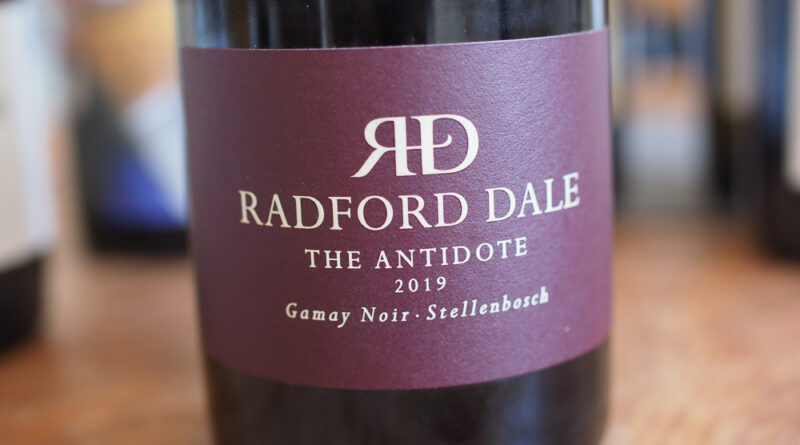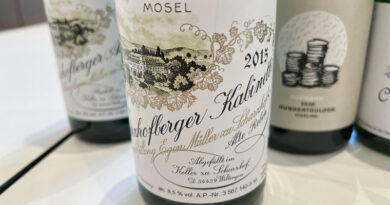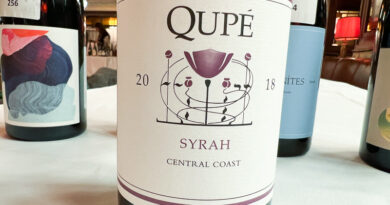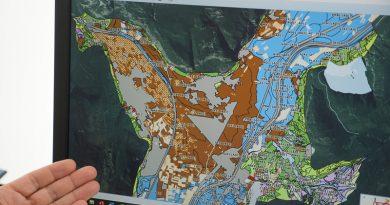South African Gamay almost became extinct, but there’s hope: two from Radford Dale
Gamay is rare in South Africa. In 2015 there were just 12 hectares planted in the country, down from 29 a decade earlier. As of the end of 2019, this had fallen further to just 7.92 hectares, almost all of which is in Stellenbosch. But Radford Dale have emerged as champions of this variety, and here I tasted two of their Gamays.
Tom Prior of Radford Dale added some context. ‘As you know, the project kicked off with the Thirst 2015 bottling,’ he says. ‘In effect, it’s a process of salvaging what remained of South Africa’s Gamay vineyards. We added the Antidote bottling to the mix with the 2017 release.’
‘Our focus is on light, fresh red varietals, or varietals which can take that route (such as Pinotage), and we’re enthusiastic importers of progressive Beaujolais [Radford Dale also have an import business]. On another topic, we now produce a Stellenbosch Grenache. It is still a rarity in this area, and whilst it’s an incredibly young site, this wine looks like the pick of our 2020s.’
Radford Dale are now planting Gamay. ‘We were able to rehabilitate an existing site to a level where we could take good quality material and plant,’ says Tom. They planted 0.5 hectares in 2017 and another 0.4 ha in 2019. These vines have been planted in the Karibib farm at the Polkadraai Hills. ‘This grower already supplies fruit for some top SA Chardonnay (Craven), Chenin (us, Alheit) and Syrah (Van Loggerenberg, Reenen Borman),’ he explains.
‘The young Gamay site sits in an elevated position within this ampitheatre of vines, facing SE towards False Bay in the distance,’ says Tom. Their first vintage will be this year. ‘The Karibib site is the first such planting of Gamay in 20 years, and it should serve as an awesome mother block for the future.’
‘Towards the end of 2021 we’ll have a third Gamay bottling in the line-up, which will bridge price and style between the Thirst and Antidote expressions. In due course, we hope to spearhead a Cape category and supply keen peers with material.’
Gamay hasn’t featured much in the varietal mix of South Africa’s winelands. ‘There’s little to go on when it comes to the why of Gamay in the Cape,’ he says. ‘Recently, I uncovered a book after a lead from Joanne Gibson, called Wines of the Cape by C de Bosdari. Writing in the 1950s on Gamay, Bosdari noted Gamay as “sturdy and prolific” and that “planted in the right soil will produce a superior wine at the Cape.” (In the context of his writings, he seems to be implying a superior wine to Pinot.)’
‘This obviously pre-dates Pinot finding a suitable home in the Hemel-en-Aarde, but may offer some clues as to why it appeared in Stellenbosch. As with Cinsault, it would have served as a useful component in creating the ligher-bodied Cabernet blends of the era. At the time, Muratie was bottling a Pinot-Gamay blend, while Chateau Alphen was a blend of Pinot, Gamay and Cab. The Alphen Red, with Cab as its main component, was apparently lighter-bodied.’
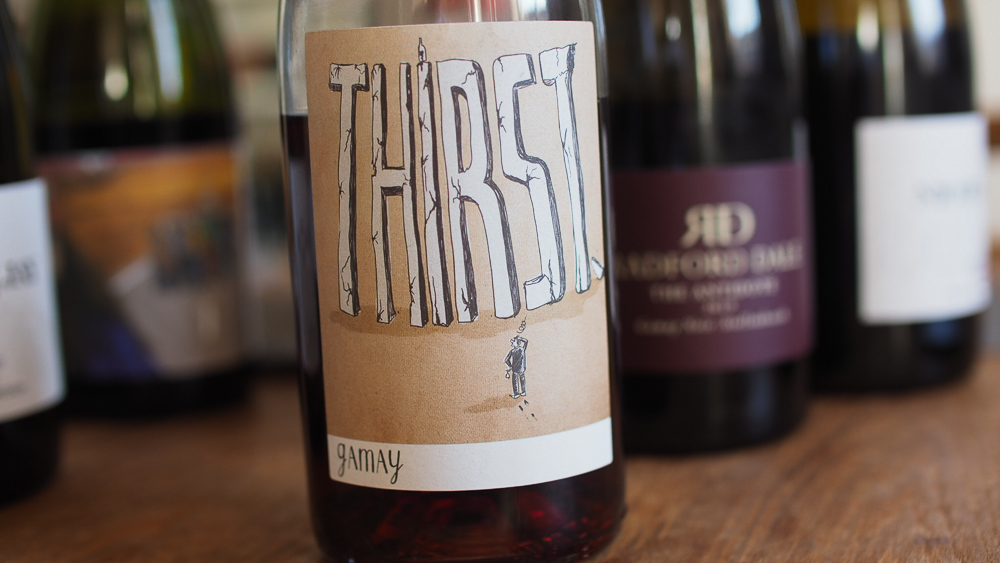
THE WINES
Radford Dale Thirst Gamay 2020 Stellenbosch, South Africa
12% alcohol. Naturally made, unfined and unfiltered. This is light, fresh and supple with juicy cherry fruit, a touch of beetroot and pomegranate, and some strawberry sweetness. This is light and juicy with some fine herby notes, and it’s quite ethereal in its naked purity. Has a touch of sour cherry on the finish. 90/100
Radford Dale The Antidote Gamay Noir 2019 Stellenbosch, South Africa
12.5% alcohol. Supple and elegant with fine red cherry and berry fruits, showing some silkiness and also bright acidity. There’s a lot of freshness, but also some richer berry fruit character and lovely elegance and refinement. Polished, in the best sense of the term, but retaining vitality. A lovely expression of Gamay. 93/100
UK agent: Les Caves de Pyrene
Find these wines with wine-searcher.com

